How to Read Food Labels for Healthy Choices: A Smart Shopper’s Guide
Ever bought a healthy snack that turned out to be a sugar bomb in disguise?
You’re not alone, with flashy packaging and buzzwords like low fat, all-natural or keto-friendly plastered across food products, it’s easy to feel confident about your choices until you turn the package around, That’s where the real story is. Learning how to read food labels for healthy choices isn’t just about counting calories, it’s about protecting your health, dodging hidden sugars and fueling your body the right way.
In a world where over 70% of packaged foods contain additives or misleading ingredients, understanding nutrition labels is no longer optional, it’s essential. Whether you’re trying to lose weight, manage a health condition or simply eat smarter, this guide will break it all down in plain English, no science degree required.
Also read – How to Avoid Hidden Sugars in Foods
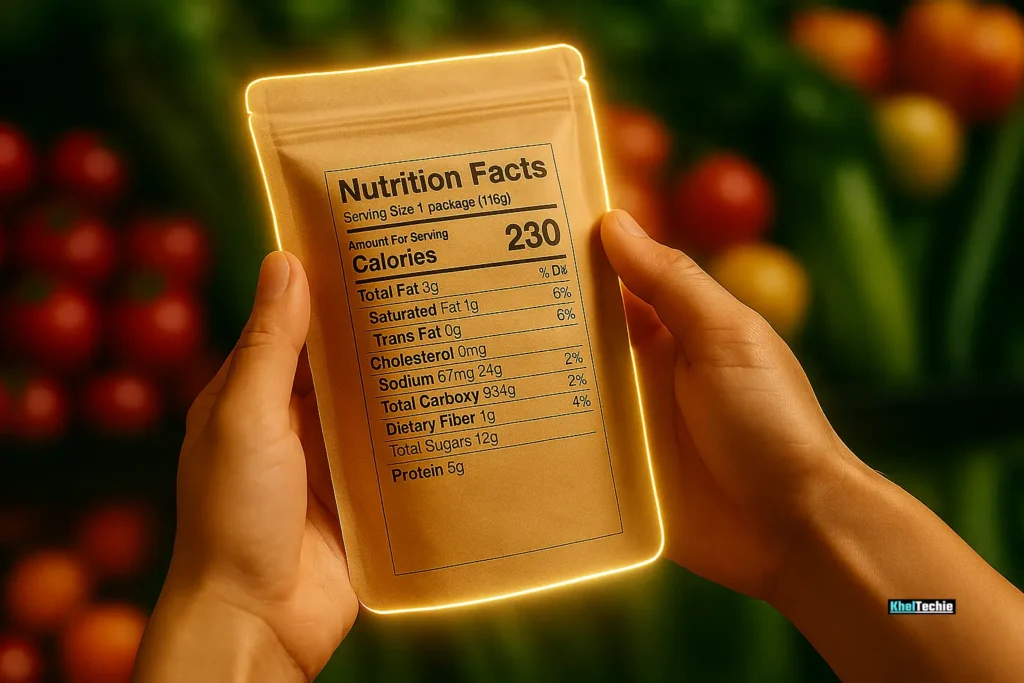
What Does It Mean to Read Food Labels for Healthy Choices?
Imagine walking into a grocery store and being handed a puzzle that determines your health without any instructions, that’s essentially what it feels like when you’re staring down a shelf full of packaged foods with no idea how to make the healthiest pick.
How to read food labels for healthy choices means learning how to interpret the information on the back or side of food packages, things like calories, fat content, sugar levels and ingredients, so you can choose products that support your wellness goals.
Think of a food label like a nutrition GPS, it tells you:
- Where you’re starting (ingredients),
- Your route (nutrients),
- And your destination (health impact).
It includes:
- Nutrition Facts Panel
- Serving Size
- Calories
- % Daily Values (%DV)
- Ingredient list
- Marketing claims (e.g., Low fat, Organic)
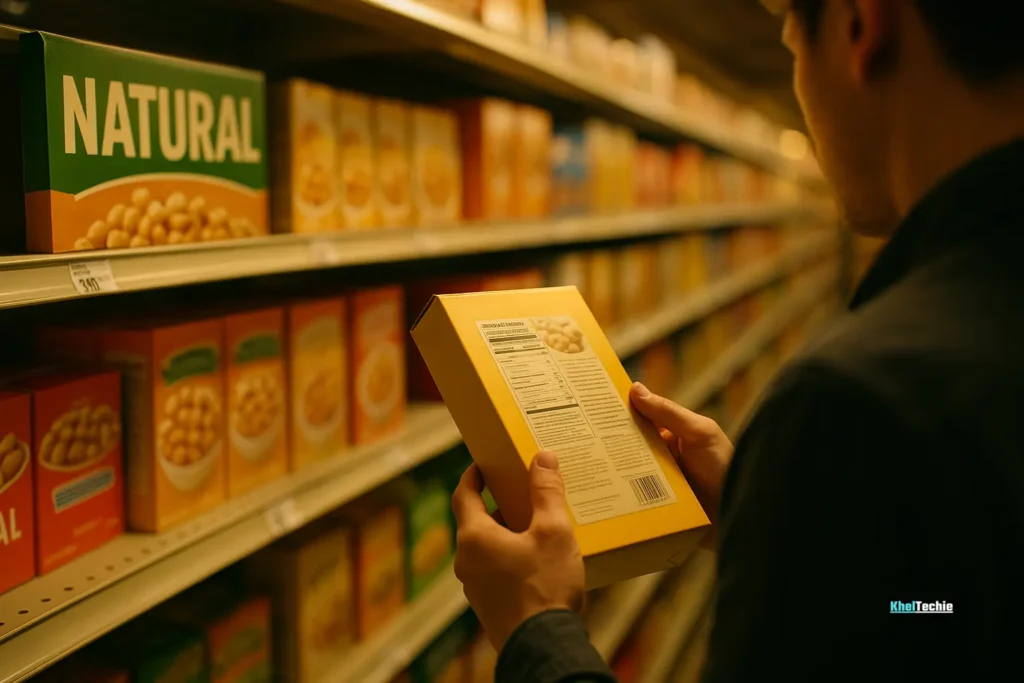
Why Reading Food Labels Matters More Than Ever
In today’s fast-moving food landscape, label literacy is your best defense and it’s only getting more important. According to the FDA, the proposed front-of-package Nutrition Info Box would clearly label products as Low, Medium, or High in saturated fat, sodium, and added sugars . This straightforward visual cue, tested on nearly 10,000 adults, aims to simplify decisions at the shelf and even push manufacturers to reformulate their foods for better health stats.
Meanwhile, According to Reuters, the World Health Organization (WHO) is urging countries worldwide to adopt similar interpretive front-of-package labels to curb obesity and chronic disease. Though only 43 countries currently use such labels, WHO finalizing its global guidance promises to shift industry and consumer habits alike, even here in the U.S.
What does this mean for you? Soon, you may not have to dig through tiny back labels to know if a food is high in hidden sugars or sodium. But until these changes are implemented, it’s up to you to read both Front and Back, check the detailed Nutrition Facts and ingredients list, and don’t rely on front-of-package claims alone.
That’s why label literacy matters more than ever. Reading food labels gives you control and it helps you spot added sugar, compare sodium levels and avoid unhealthy ingredients. Shopping online? Don’t just trust the image, dig into the product’s website or skip anything suspiciously vague. In a world where what you eat can directly impact your health, savvy label-reading is not just helpful, it’s essential.

How to Decode Nutrition Labels Like a Pro
Let’s walk through exactly how to read a food label, step by step. You’ll be surprised how easy it becomes once you know what to look for.
Step 1: Check the Serving Size First
Before you even glance at the calories or nutrients, look at the serving size. This number tells you how many servings are in the package and how big each portion is. For example, a bag of chips might say one serving equals 15 chips, but the whole bag contains three servings. That means if you eat the entire bag, you have to multiply all the values by three.
Always adjust based on how much you actually plan to eat.
Step 2: Know Your Calories, But Don’t Obsess Over Them
Calories per serving are listed just below the serving size. They tell you how much energy you’ll get from eating that amount. However, not all calories are created equal. A 200-calorie snack made from whole grains and nuts is far healthier than a 200-calorie candy bar filled with sugar and preservatives.
Use calories as a general guide, but always check the rest of the label before deciding.
Step 3: Watch Out for the Big 5 Nutrients
These five nutrients are the most important ones to track:
- Total Fat – Aim for less than 65g per day.
- Saturated Fat – Keep under 20g daily.
- Trans Fat – Avoid completely, even small amounts are harmful.
- Cholesterol – Limit to 300mg or less per day.
- Sodium – Try to stay under 2,300mg (or 1,500mg if you have high blood pressure).
If these numbers are high relative to the serving size, put the item back.
Step 4: Focus on the Good Stuff
Flip the script and look for the nutrients you want more of:
- Dietary Fiber – Helps digestion and keeps you full longer. Aim for at least 25g/day.
- Vitamins A & C, Calcium, and Iron – These indicate how nutrient-dense a food is.
- Protein – Especially important if you’re trying to build muscle or feel full longer.
Foods high in fiber and protein with low saturated fat and sodium are usually solid choices.
Step 5: Scrutinize the Ingredient List
Now, forget the front of the package, flip it over and read the ingredient list.
Here’s what to look for:
- Artificial additives: Colors, flavors, preservatives (e.g., BHA, TBHQ).
- Refined sugars: High-fructose corn syrup, cane sugar, dextrose, agave nectar.
- Hydrogenated oils: These mean trans fats are hiding in the product.
If you can’t pronounce an ingredient, Google it. Chances are, it’s not good for you.
Step 6: Understand the % Daily Value (%DV)
This column helps you determine if a food is high or low in a certain nutrient.
- 5% DV or less = Low
- 20% DV or more = High
So, if a food has 25% DV for sodium, that’s a red flag, especially if you’re watching your salt intake.
Step 7: Don’t Fall for Marketing Tricks
Food companies spend millions making their packaging look healthy. Here’s how they trick you:
| Phrase | What It Really Means |
|---|---|
| Natural | No legal definition, can still include processed ingredients |
| Multigrain | Just means multiple grains, not necessarily whole grains |
| Light/Lite | Usually means reduced fat or calories, but could be loaded with sugar |
| Made with Whole Grains | Might only have a tiny amount, check the first ingredient |
Real whole grains will say ‘100% whole wheat’ or ‘100% whole grain’ and list it as the first ingredient.
Step 8: Compare Products Side-by-Side
If you’re torn between two similar items, compare their labels. Look at:
- Sodium
- Sugar
- Saturated fat
- Fiber
- Protein
You’d be amazed how often the ‘healthier’ option isn’t actually better.
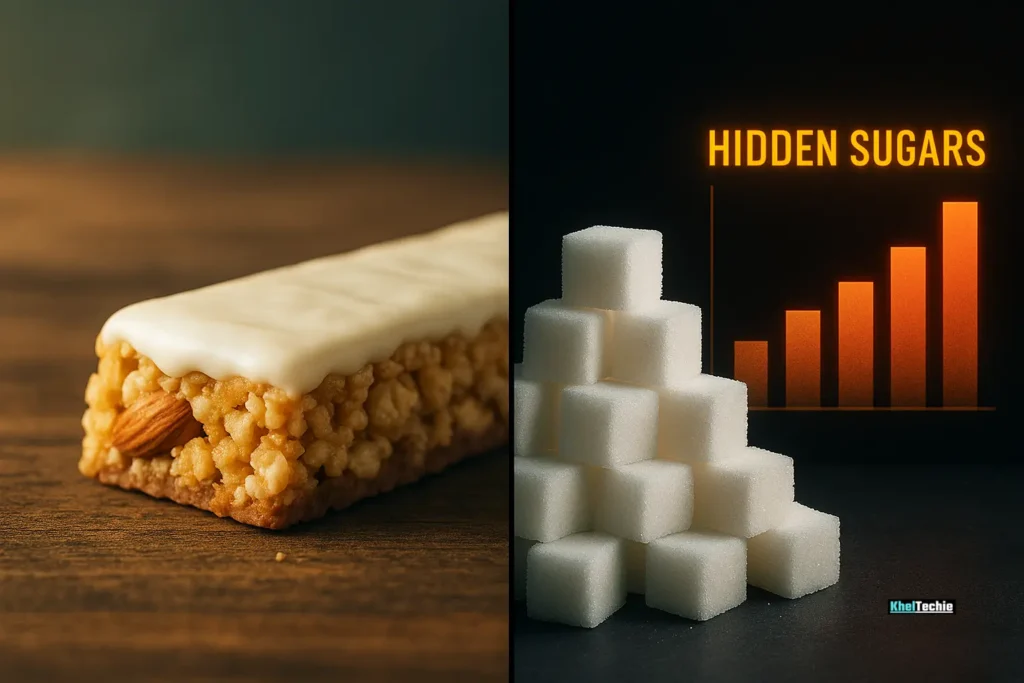
Step 9: Learn to Spot Hidden Sugars
Sugar hides in almost everything, including healthy foods like yogurt and granola.
Look for these names on the ingredient list:
- Agave nectar
- Corn syrup
- Fructose
- Maltose
- Dextrose
- Evaporated cane juice
The closer to the top of the list, the more sugar the product contains.

Step 10: Use Apps and Tools to Help You
There are several free apps that help decode labels:
- MyFitnessPal – Scans barcodes and tracks macros.
- Yazio – Gives personalized nutrition advice.
- Fooducate – Rates products and offers healthier alternatives.
I personally use Fooducate when grocery shopping, it’s like having a dietitian in your pocket.
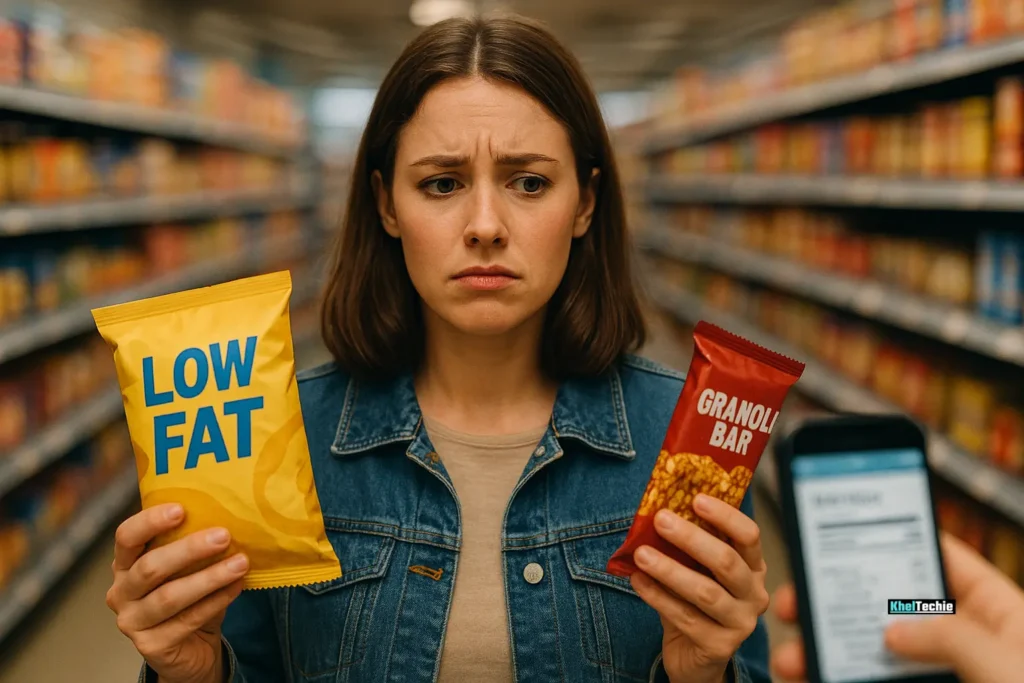
Common Mistakes People Make When Reading Food Labels
Even smart shoppers slip up sometimes. Here are the most common blunders and how to avoid them.
- Trusting Front-Label Claims
- Gluten-free, natural or organic ≠ healthy.
- Ignoring Serving Size
- Consuming more than one serving without realizing.
- Overlooking Sugar Synonyms
- Includes cane juice, dextrose, maltodextrin, etc.
- Falling for Zero Sugar
- Often includes artificial sweeteners.
- Skipping Ingredient List
- Always read the fine print, real ingredients win.
Also read – How to Eat Healthy on a Budget in the US
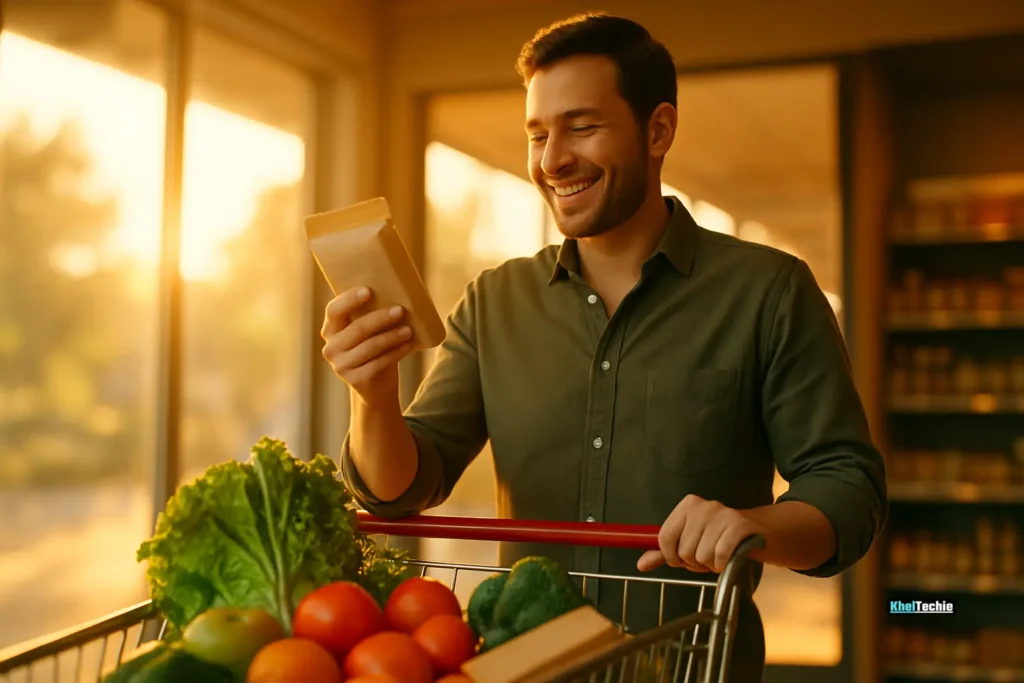
Conclusion: Start Making Smarter Choices Today
Learning how to read food labels for healthy choices isn’t just about avoiding bad ingredients, it’s about empowering yourself to make informed decisions that align with your health goals. Whether you’re managing weight, controlling blood sugar or simply trying to eat cleaner, mastering food labels is one of the most impactful steps you can take.
So next time you’re in the grocery store, don’t just grab the first thing off the shelf. Take a second, turn it over and read the label. Your body and future self will thank you and remember, Knowledge is power. With this guide in your toolbelt, you’re ready to shop smarter, eat better, and live healthier. Got questions or label fails to share? Drop a comment or share this guide with a friend!
Note: Always consult with a healthcare professional before making significant changes to your diet or starting new supplements.
Frequently Asked Questions About Food Label Reading
What should I look for first on a food label?
Start with the serving size and number of servings per container. Then check calories, followed by total fat, sodium, and sugar.
How do I know if a food is high in fiber?
Check the dietary fiber line. Aim for at least 3g per serving. For a high-fiber food, look for 5g or more.
Is the “% Daily Value” based on a 2,000-calorie diet?
Yes! The %DV is calculated using a 2,000-calorie-per-day reference. If you eat more or less, adjust accordingly.
Are organic foods always healthier?
Not necessarily, Organic junk food is still junk food. Always read the label.
What does “enriched” mean?
Enriched means vitamins and minerals were added back after processing. It’s not the same as whole grain.
Should I avoid all fats?
Nope! Focus on limiting saturated and trans fats, but unsaturated fats (like avocado, olive oil, and nuts) are healthy.
What is the difference between “use by,” “sell by,” and “best by” dates?
Use By – Last recommended date for best quality and safety.
Sell By – For stores to manage inventory.
Best By – When the product is at peak flavor and quality.
Can I trust claims like “low sodium” or “no added sugar”?
Yes, but always verify by checking the nutrition facts and ingredients list.
Why do some labels say “contains” or “may contain” allergens?
“Contains” means the product definitely has that allergen. “May contain” suggests possible cross-contamination during manufacturing.
Are nutrition labels required on all foods?
Most packaged foods require labels. Fresh produce, meat, and seafood are generally exempt unless pre-cut or pre-packaged.
What ingredients should I avoid?
Watch for artificial dyes, hydrogenated oils, high-fructose corn syrup.
What’s the deal with “multigrain”?
Not the same as whole grain. Look for “100% whole grain” in ingredients.


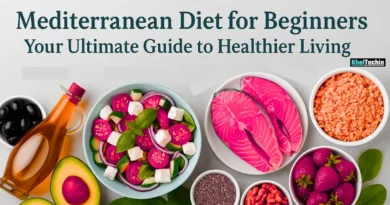

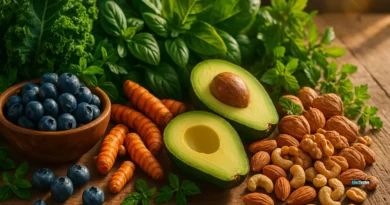
Pingback: Easy Rainbow Eating Diet Meal Plan For Beginners